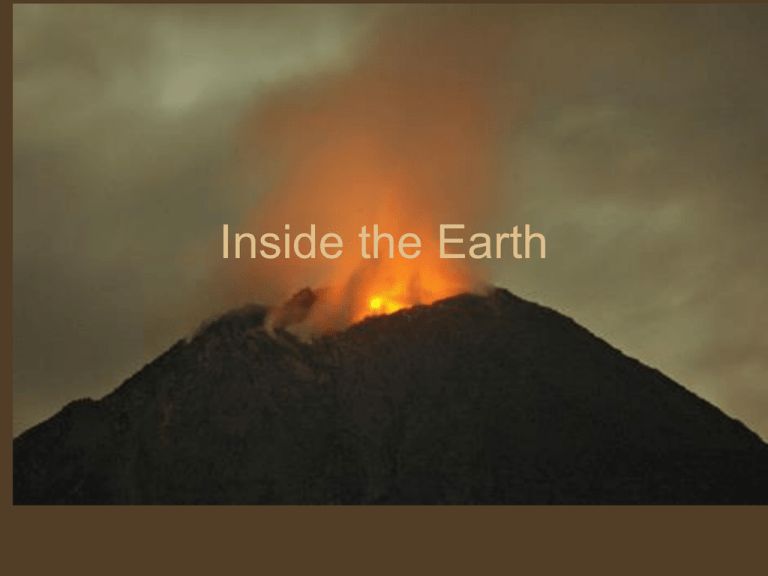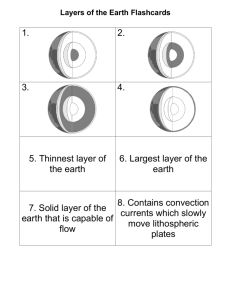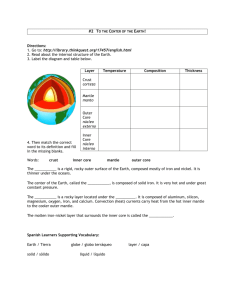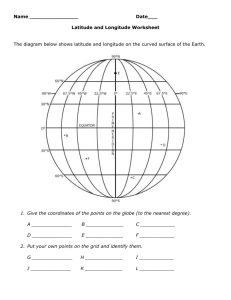Inside the Earth
advertisement

Inside the Earth Planet Earth • All objects on or near Earth are pulled toward Earth’s center by gravity. • Earth formed as gravity pulled small particles together, that would collide, build mass, and collect more particles. • Early Earth generated thermal energy in its interior, making the rocks of the planet soft enough to flow. Formation of Earth’s Layers • Earth developed distinct layers of different material according to their densities (Do you remember DENSITY?). • When ancient Earth started melting, the densest materials sank and formed the innermost layer. • The least dense materials stayed at the surface and formed a separate layer, and materials with intermediate densities formed layers in between. Temperature and pressure increase as depth increases inside Earth. Composition (What it is made of) • Core • Mantle • Crust Core -Outer core – liquid iron & nickel -Inner core – solid iron & nickel The Inner Core The inner core of the Earth has temperatures and pressures so great that the metals are squeezed together and are not able to move. * The inner core is a solid. The Outer Core The outer core is liquid. • The outer core is made up of iron and is very dense. • Because the outer core contains iron, when it flows it generates a magnetic field. This is the source of the Earth's magnetic field. Mantle -Much thicker layer – about 2,900 km -Contains most of Earth’s mass. -Molten rock -Magma comes from mantle The Mantle • The mantle is the largest layer of the Earth. • The mantle is divided into two regions: the upper and lower sections. • The upper mantle is a solid while the lower mantle is more fluid. Mantle cont. • The layer of rocks within the mantle, where the rock is soft enough to flow, is called the asthenosphere. Convection Currents As the molten material in the asthenosphere is heated by the core it becomes less dense and rises. The material cools because it gets further away from the heat source. Because it’s cooler, it’s more dense so it sinks. It’s now closer to the heat so it all begins again! The Crust • Outer layer • 5-100 km thick • Makes up only 1% of Earth’s mass. • 2 types of crust – Oceanic (very dense, made of basalt) – Continental (less dense, made of granite) Oceanic and Continental Crust The crust is typically about 25 miles thick beneath continents, and about 6.5 miles thick beneath oceans. The crust is relatively light and brittle. Most earthquakes occur within the crust. Physical Structure of the Earth (5 Layers) • Lithosphere- rigid outer layer crust +upper mantle • Asthenosphere- solid rock that flows slowly (like hot asphalt) • Mesosphere- middle layer • Outer Core- liquid layer • Inner Core- solid due to pressure, very dense Tectonic Plates • Earth’s lithosphere is broken into about 19 pieces • These plates move on top of the asthenosphere due to convection currents.






